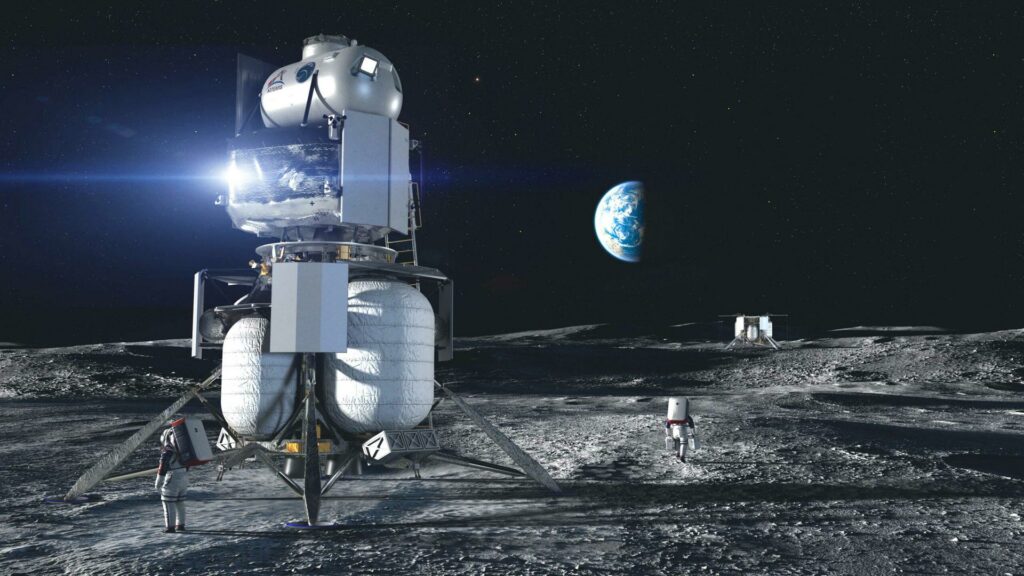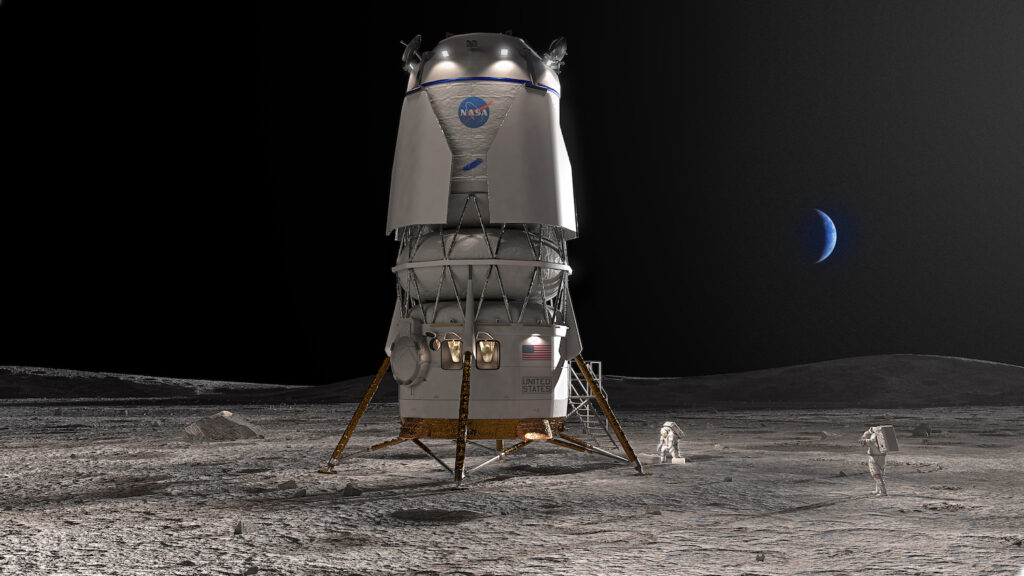The “national team” led by Blue Origin (it also includes Lockheed Martin, Draper, Boeing, Astrobotic and Honeybee Robotics) won the competition to create a lunar lander for the needs of the Artemis program. It will be used during the Artemis V mission.
Blue Origin vs. SpaceX and NASA
A few years ago, NASA initiated the HLS (Human Landing Services) competition, the purpose of which was to create a spacecraft for delivering people and cargo to the lunar surface. As a result, its winner was the SpaceX application. The company offered to use a modified version of its Starship spacecraft for these purposes.

Blue Origin, which also took part in the competition, did not agree with such a decision. The company initially protested NASA’s decision, and then appealed it in court. Its lawyers referred to the fact that the organization initially stated its desire to choose two winners, which led to the price offered by the company, which was much higher than the price of SpaceX. In turn, the aerospace administration argued its position by the fact that it had never given any legal guarantees to finance two contracts at once and had to limit itself to one due to lack of funds. As a result, the court rejected Blue Origin’s claim.
In 2022, the story continued. NASA managed to enlist the financial support of the American Congress, which allowed it to return to the original approach. In September, a new competition was announced, the winner of which would receive a contract for the construction of an alternative lunar vehicle. Blue Origin took part in the competition again. This time it was a success.
Blue Origin Lunar Lander
According to an official NASA press release, the Blue Origin-led team will receive a contract worth USD 3.4 billion. It includes the construction of a lunar module and two flights — a demonstration unmanned test, followed by its use during the Artemis V mission. Its implementation is planned for the end of the 2020s.

At the moment, Blue Origin has not disclosed the technical details of its lunar lander. But judging by the published render, it is noticeably different from the version that has participated in the first competition. It is reported that it will use a mixture of liquid hydrogen and liquid oxygen as fuel and will be able to land anywhere on the Moon.
According to https://www.nasa.gov
Follow us on Twitter to get the most interesting space news in time
https://twitter.com/ust_magazine

